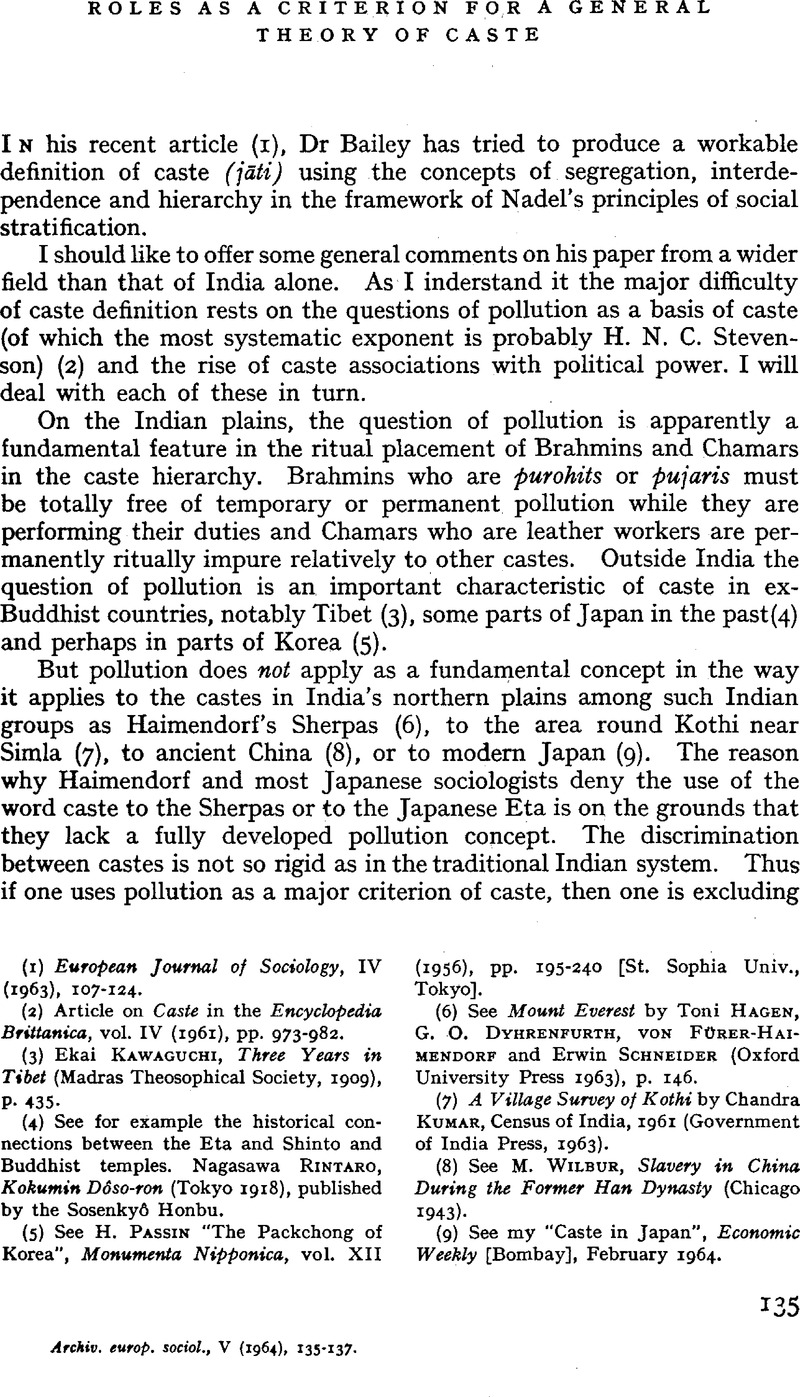No CrossRef data available.
Published online by Cambridge University Press: 28 July 2009

(1) European Journal of Sociology, IV (1963), 107–124.Google Scholar
(2) Article on Caste in the Encyclopedia Brittanica, vol. IV (1961), pp. 973–982.Google Scholar
(3) Kawaguchi, Ekai, Three Years in Tibet (Madras Theosophical Society, 1909), p. 435.Google Scholar
(4) See for example the historical connections between the Eta and Shinto and Buddhist temples. Rintaro, Nagasawa, Kokumin Dôso-ron (Tokyo 1918)Google Scholar, published by the Sosenkyô Honbu.
(5) See Passin, H. “The Packchong of Korea”, Monumenta Nipponica, vol. XII (1956), pp. 195–240CrossRefGoogle Scholar [St. Sophia Univ., Tokyo].
(6) See Mount Everest by Hagen, Toni, Dyhrenfurth, G. O., Von Fürer-Haimendorf, and Schneider, Erwin (Oxford University Press 1963), p. 146.Google Scholar
(7) A Village Survey of Kothi by Kumar, Chandra, Census of India, 1961 (Government of India Press, 1963).Google Scholar
(8) See Wilbur, M., Slavery in China During the Former Han Dynasty (Chicago 1943).CrossRefGoogle Scholar
(9) See my “Caste in Japan”, Economic Weekly [Bombay], 02 1964.Google Scholar
(10) See Totemism by Lévi-Strauss, Claude, translated by Needham, R. (New York 1963).Google Scholar
(11) See The Scheduled. Castes and Tribes of Himachal Pradesh, volume to be published shortly by the Census of India.
(12) Les castes by Hocart, A. M. (Paris 1938).Google Scholar